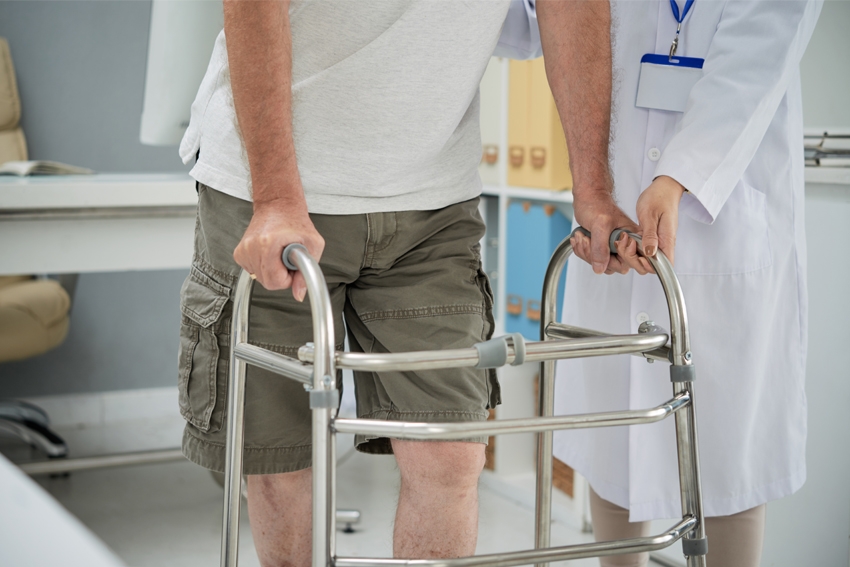The vestibular system includes the parts of the inner ear and brain that help control balance and eye movements. If the system is damaged by disease, aging, or injury, vestibular disorders can result and are often associated with one or more of these symptoms, among others: – Dizziness. – Imbalance. – Vertigo.
What are the symptoms of a vestibular disorder?
The vestibular system includes the parts of the inner ear and brain that help control balance and eye movements. If the system is damaged by disease, aging, or injury, vestibular disorders can result, and are often associated with one or more of these symptoms, among others.
Types of Vestibular Disorders
Benign Paroxysmal Positional Vertigo (BPPV)
Benign paroxysmal positional vertigo (BPPV) is triggered by certain changes in head position, such as tipping the head up or down. It's rarely serious unless it increases the risk of falling. People can experience dizziness, a spinning sensation (vertigo), lightheadedness, unsteadiness, loss of balance, and nausea. Treatment includes a series of head movements that shift particles in the ears.
Meniere's Disease
Meniere's disease is a disorder of the inner ear that can lead to dizzy spells and hearing loss. In most cases, Meniere's disease affects only one ear. Meniere's disease can occur at any age, but it usually starts between young and middle-aged adulthood. It's considered a chronic condition, but various treatments can help relieve symptoms and minimize the long-term impact on your life.
Vestibular Neuronitis (Labyrinthitis)
Inflammation of the inner ear or the nerves that connect the inner ear to the brain. Labyrinthitis is usually triggered by an infection, such as a cold or flu. Symptoms include earing loss, dizziness, and a spinning sensation (vertigo) are common symptoms. Diagnosing labyrinthitis is challenging because these symptoms are also common in many other conditions.
Vestibular Symptom Categories
Vertigo and Dizziness
- Spinning or whirling sensation; a feeling the person or world moving when it is not (vertigo)
- Symptoms can be present while sitting still, in specific positions, or with movement (rolling over in bed)
- Lightheaded, floating, or rocking sensation (dizziness)
Balance and Spatial Orientation
- Imbalance, stumbling, difficulty walking straight or when turning
- Clumsiness or difficulty with coordination
- Tendency to look downward to confirm the location of the ground
- Tendency to touch or hold onto something when standing, or to touch or hold the head while seated
- Sensitivity to changes in walking surfaces or footwear
- Difficulty walking in the dark
- Muscle and joint pain (due to difficulty balancing)
Vision
- Trouble focusing or tracking objects with the eyes; objects or words on a page seem to jump, bounce, float, or blur or may appear doubled
- Sensitivity to light, glare, and moving or flickering lights; fluorescent lights may be especially troublesome
- Tendency to focus on nearby objects; increased discomfort when focusing at a distance
- Poor depth perception
Other's
- Nausea or vomiting
- “Hangover” or “seasick” feeling in the head
- Motion sickness
- Sensation of fullness in the ears
- Ear pain
- Headaches


An inner ear disorder may be present even when there are no obvious or severe symptoms. It is important to note that most of these individual symptoms can also be caused by other unrelated conditions and should be discussed with a health professional.
How Physical therapy can help
After an evaluation by our physical therapist. A treatment plan will be creaated and discussed with you prior to initiation of trearment. Each treatment plan is individualized for the patient to include medical hisotry and symptomtology,
Epley Maneuvar
The Epley maneuver or repositioning maneuver is a maneuver used by medical professionals to treat one common cause of vertigo, benign paroxysmal positional vertigo of the posterior or anterior canals of the ear. It works by allowing free-floating particles from the affected semicircular canal to be relocated, using gravity, back into the utricle, where they can no longer stimulate the cupula, therefore relieving the patient of bothersome vertigo.
